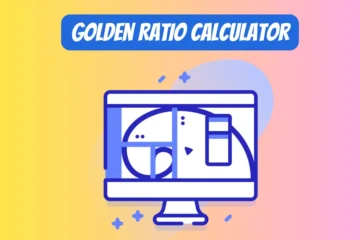Table of Contents
How to use this Loan Calculator?
- Enter Loan Amount: Type the principal loan amount you wish to borrow in the “Loan Amount” field.
- Enter Interest Rate: Input the annual interest rate as a percentage in the “Interest Rate (%)” field.
- Select Term Unit: Choose the unit for the loan term (Years or Months) from the dropdown menu labeled “Loan Term.”
- Enter Loan Term: Type the duration of the loan according to the selected unit in the next input field.
- Click Calculate: Press the “Calculate” button (with the money bill wave icon) to compute the monthly payment, total interest, and total amount to be paid.
- View Results: After clicking “Calculate,” observe the displayed results for monthly payment, total interest, and total amount to be paid.
- Copy Results (Optional): Click the “Copy” button (visible after calculation) to copy the results to your clipboard.
- Reset Fields (Optional): To clear all entries and results, click the “Reset” button (with the redo icon).
Understanding Loans
Before we dive into calculations, let’s understand what a loan is. A loan is borrowed money that you have to pay back with interest over a predetermined period. Loans can be used for various purposes, like buying a car, a house, or funding education.
Simple Interest: A Quick Overview
Simple interest is calculated using the initial principal, which is the original amount of the loan or investment. The formula for simple interest is:
Simple Interest = Principal × Rate × Time
Here, the rate is annual, and time is in years.
Loan Calculations: The Amortization Method
Loan payments are calculated using amortization, a method where each monthly payment is the same and includes both principal and interest. The formula for calculating the monthly payment on an amortized loan is:
Monthly Payment = (Principal × Monthly Interest Rate) / 1 − (1 + Monthly Interest Rate)−Number of Payments
Breaking Down the Formula:
- Principal x Monthly Interest Rate: This part of the formula calculates the interest you’ll pay on the principal amount for one month.
- 1 + Monthly Interest Rate: Adding 1 to the monthly interest rate adjusts the rate to be a multiplier rather than just a rate.
- −(1+Monthly Interest Rate)−Number of Payments: Imagine you have to make monthly payments on a loan. Each payment you make in the future is actually worth a little bit less than it seems because of interest. Over time, these payments will accumulate interest, which affects their current worth. This part of the formula helps to “discount” these future payments to find out how much they are worth right now, in today’s terms. By doing so, we can better understand the real cost of the loan or investment.
- 1 − [the above expression]: This gives you the total proportion of the loan that will be paid over the term, discounted to present value.
- The Entire Denominator: Represents the discounted value of all future monthly payments.
- Dividing the interest part by this discounted value: Finally, you divide to get the Monthly Payment or EMI, which is the constant monthly payment that will clear off the loan over the term specified.
As the loan progresses, a larger portion of your payment goes toward the principal, and a smaller part goes toward interest.
The Difference Between Loan and Simple Interest Calculations
- Interest Calculation: Loan interest is compound in nature, whereas simple interest is, well, simple.
- Monthly Payments: Loan payments are uniform and include both principal and interest, while simple interest only accrues on the principal.
- Reducing Balance: In loans, the interest is calculated on a reducing balance, meaning it decreases over time. In contrast, simple interest is calculated on a fixed principal.
Practical Applications of this Loan Calculator
- Budget Planning: Before taking out a loan, you can use a loan calculator to understand how the monthly payments will fit into your budget.
- Loan Comparison: If you’re considering multiple loan options, a loan calculator can help you directly compare the cost of each over time, based on interest rates and terms.
- Negotiation Tool: Knowing the exact figures can empower you during negotiations with a lender, helping you advocate for better terms or a lower interest rate.
- Early Repayment Analysis: If you’re considering making extra payments, a loan calculator can show you how much you’ll save in interest over time.
- Variable Rate Forecast: For loans with a variable interest rate, you can use a loan calculator to understand how different rate changes will affect your monthly payment.
- Refinancing Decisions: If you’re thinking about refinancing, a loan calculator can show you whether the lower rate justifies the closing costs and other fees.
- Home Buying: For mortgages, a loan calculator can help you figure out how much house you can afford, taking into consideration property taxes and insurance.
- Car Purchase: If you’re buying a vehicle, you can use the calculator to see how the length of the loan and the down payment will affect your monthly costs.
- Student Loans: For students or parents considering education loans, a loan calculator can help you understand your long-term financial commitment.
- Business Loans: If you’re a business owner in need of capital, you can use a loan calculator to plan for repayment and assess how the loan will impact your cash flow.
- Investment Decision: By knowing the cost of borrowing, you can make a more informed decision about whether to take a loan for an investment opportunity.
- Financial Advisory: Financial planners and advisors can use loan calculators as a tool to give their clients a clearer picture of their debt situation.
Types of Loans
- Personal Loans: Unsecured loans you can use for any purpose, from medical emergencies to vacations.
- Home Loans: Specifically used to purchase or refinance a home, often requiring a down payment and collateral.
- Auto Loans: Financing options for purchasing a new or used vehicle, usually with a fixed interest rate and repayment period.
- Student Loans: Loans designed to cover the cost of education, including tuition, books, and living expenses.
- Payday Loans: Short-term, high-interest loans meant to tide you over until your next paycheck.
- Business Loans: Tailored to help businesses cover expenses like equipment, expansion, or working capital.
- Home Equity Loans: Secured loans that let you borrow against the value of your home, often at a lower interest rate.
- Credit Card Loans: Revolving credit that allows you to borrow as much or as little as you need up to a certain limit.
- Bridge Loans: Short-term loans to cover immediate expenses, often used in real estate transactions.
- Construction Loans: Financing for building a new home, often converting to a traditional mortgage after construction is complete.
- Secured Loans: Loans that require collateral, like your car or home, to secure the loan.
- Unsecured Loans: Loans that don’t require collateral, but often come with higher interest rates due to the increased risk to the lender.
- Installment Loans: Loans that are repaid over time through a series of fixed payments.
- Debt Consolidation Loans: Loans used to pay off multiple debts, ideally at a lower interest rate, making it easier to manage one single payment.
- VA Loans: Home loans available to veterans, active-duty service members, and certain members of the National Guard and Reserves.
The Importance of Credit Score
Have you heard about this thing called a credit score? It’s basically a three-digit number that sums up how well you’ve managed your money, especially when it comes to borrowing. Think of it as a report card for your financial life. The better you are at paying back loans on time, keeping your credit card balance low, and generally being responsible with money, the higher your credit score will be. A good range is typically between 700 and 850, and the closer you are to 850, the more you’re like the financial equivalent of a valedictorian!
Credit Scores and Loans: Lenders, like banks and credit card companies, sneak a peek at your credit score to decide if they want to lend you money or not. It’s like their way of sizing you up to see if you’re good for it. A high credit score is like a golden ticket; you’ll not only have an easier time getting approved for loans but you’ll also snag those lower interest rates. On the flip side, a low score might mean you’ll have a tough time getting a loan, and if you do, you could be looking at higher interest rates. So, keeping your credit score in tip-top shape can save you some serious cash in the long run.
Conclusion
Understanding how loans work, how they’re calculated, and how they differ from simple interest can help you make informed decisions. Whether you’re looking to buy a home, a car, or finance your education, it’s crucial to grasp the nuances to navigate the loan landscape effectively.
By keeping these points in mind, you’ll be better equipped to handle loans and make wise financial choices.
Enjoyed using this? Why not explore our other economics tools?









